Convenience, or so-called proximity stores, are expanding in Russia, where shopper demand for fresh food to-go and time-saving solutions are driving sales.
The Russian grocery market is the eighth largest globally in 2019, valued at $261.2 billion, according to the IGD Retail Analysis. IGD forecasts the market will grow by 6.9% in total between 2019 and 2024, when it will generate sales of $279.3 billion. However, out of the leading 20 global grocery retailing markets, Russia is forecast to expand the slowest to 2024, in dollar terms, lagging countries in Europe, such as Germany, which is forecast to see total growth of 15.2%, and especially in Central and Eastern Europe. Poland, for example, is set to expand by 18.9%.
“The Russian market will be challenged by a continuing, yet marginal, decline in real wage growth, which is expected to stagnate in the short term,” said Amin Alkhatib, IGD senior international retail analyst. “This will be accentuated by the sustained moderate pace of inflation in the country, which will also cause prices to rise on key, everyday staple purchases and limit shoppers’ spending power,” he said.
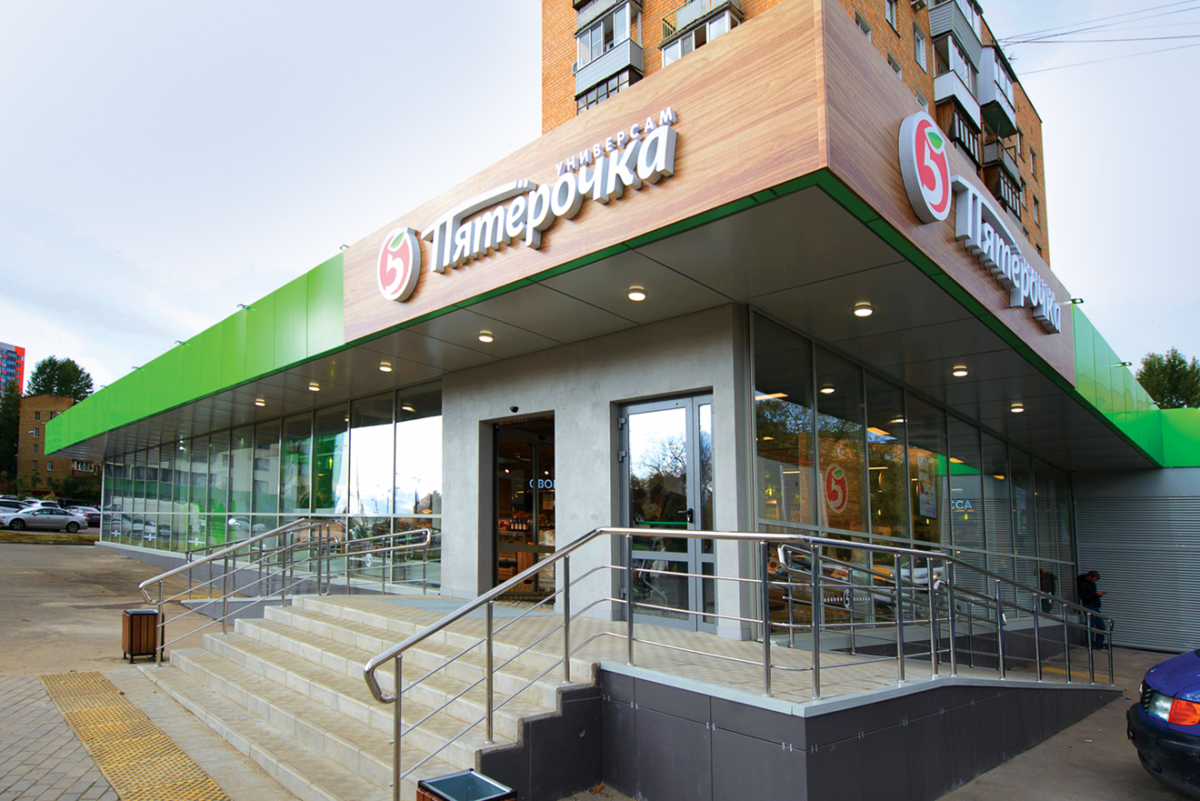
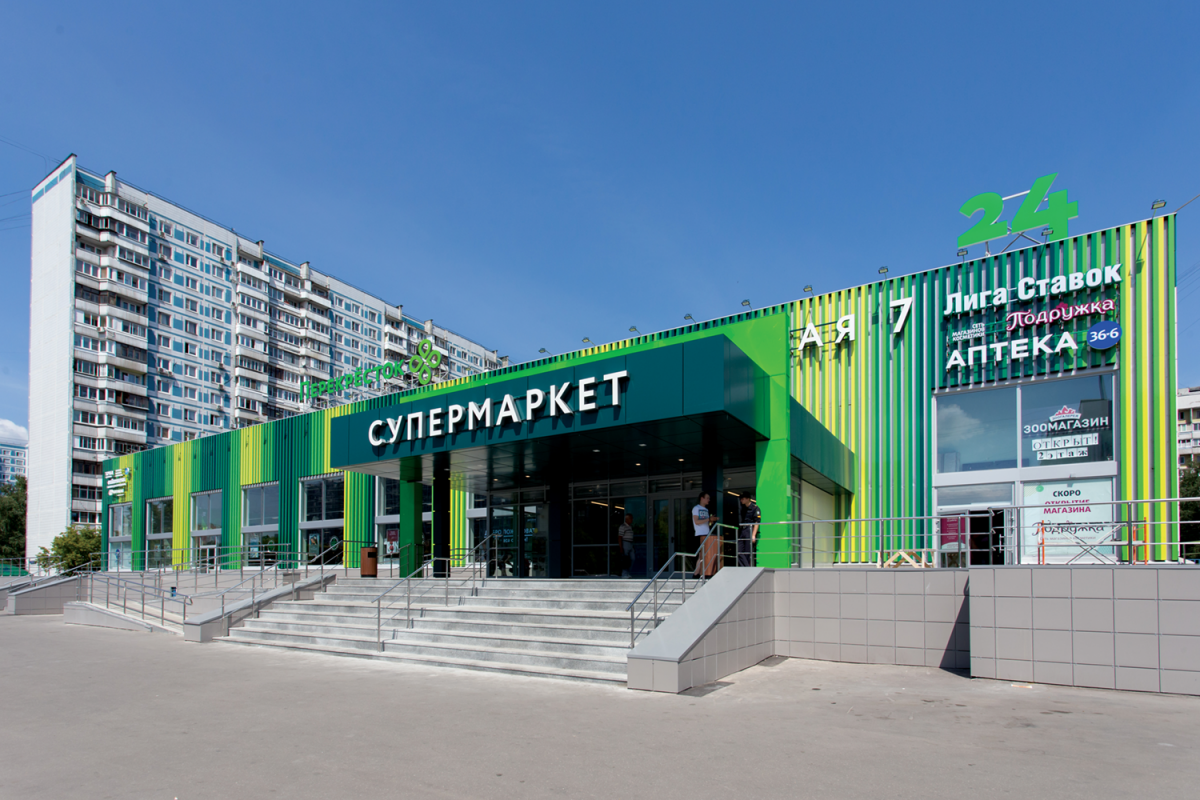 X5 Retail Group—the largest food retailer in Russia—is eyeing significant opportunity for growth as the food retail market consolidates.
X5 Retail Group—the largest food retailer in Russia—is eyeing significant opportunity for growth as the food retail market consolidates.
Despite rising competition from modern retail channels, the importance of traditional trade formats in Russia cannot be underestimated, said Alkhatib. Traditional trade, which includes stores run by independent and small-scale operators, is expected to remain the biggest grocery retail channel in the longer term and will account for more than 50% of sales in 2024. Outside the country’s major cities, most of the grocery retail landscape remains dominated by independent and small-scale operators. In fact, the top five players hold a combined share of just 26%, which is significantly lower than you would see in many Western European markets.
Within modern retail channels, the convenience and discount channels are the next largest, together accounting for nearly a third of value sales, reports the IGD. Both are set to grow sales and account for a larger share in 2024 as leading retailers, X5 and Magnit, along with others, build new stores, improve existing ones to offer new products and services and acquire small, regional retailers, which will help consolidate the market.
X5 Retail Group—the largest food retailer in Russia—is eyeing significant opportunity for growth as the food retail market consolidates. In fact, today about 50% of X5’s new store openings are replacements of existing players. Pyaterochka is X5 Retail Group’s proximity store format. It operates about 15,000 stores in Russia, catering to community and convenience needs with a best customer value proposition that includes four key pillars: fresh foods you can trust, low prices, amazing convenience and car-ing for the community/sustainable.
The sustained moderate pace of inflation in the country will cause prices to rise on key, everyday staple purchases and limit shoppers’ spending power.
“The proximity format is big in Russia, and we see quite a bit of market potential for growth, with 10,000 more stores in the regions where we are present,” said Sergei Goncharov, CEO at Pyaterochka. However, it will be a more balanced growth approach, with the rate of store openings slowing from 3,000 stores per year previously to about 2,000 stores a year today. “Now there is more focus on increasing the density of sales via innovation, labor optimization and by focusing on the customer experience,” Goncharov said.
Large Stores Shrink
Hypermarkets will see flat sales through 2024, showing the slowest expansion among the modern grocery channels, according to the IGD. “The switch of shopper habits to buying little and often and the improvements being made to the ranges and products in smaller stores closer to shoppers will limit the growth opportunities for hypermarkets,” said Alkhatib. “This will be exacerbated in the short term as leading retailers X5 and Magnit convert their hypermarkets to supermarkets and close underperforming stores altogether,” he added.
Perekrestok is X5’s supermarket chain and Russia’s largest with 811 stores. This year marks the retailer’s 25th anniversary, making it one of the oldest and first modern format retailers in the market. According to Perekrestok CEO Vladislav Kurbatov, supermarkets are replacing the mission of hypermarkets by being in closer proximity to customers and able to fulfill all their needs. Indeed, Perekrestok is in the process of taking over 34 of X5’s 91 Karousel hypermarket stores to convert to its own format. The retailer also tested three smaller models of its supermarket format in 2019, and Kurbatov reports sales have not decreased.
The trend toward smaller stores became apparent two years ago, Kurbatov said. While Perekrestok has won increased frequency from its loyal shoppers, the retailer has reduced the number of SKUs per transaction. “People are coming more often, but they are buying less,” he said. Shoppers are frequenting more stores per trip—seven or eight today, compared with two to three stores previously, he said.
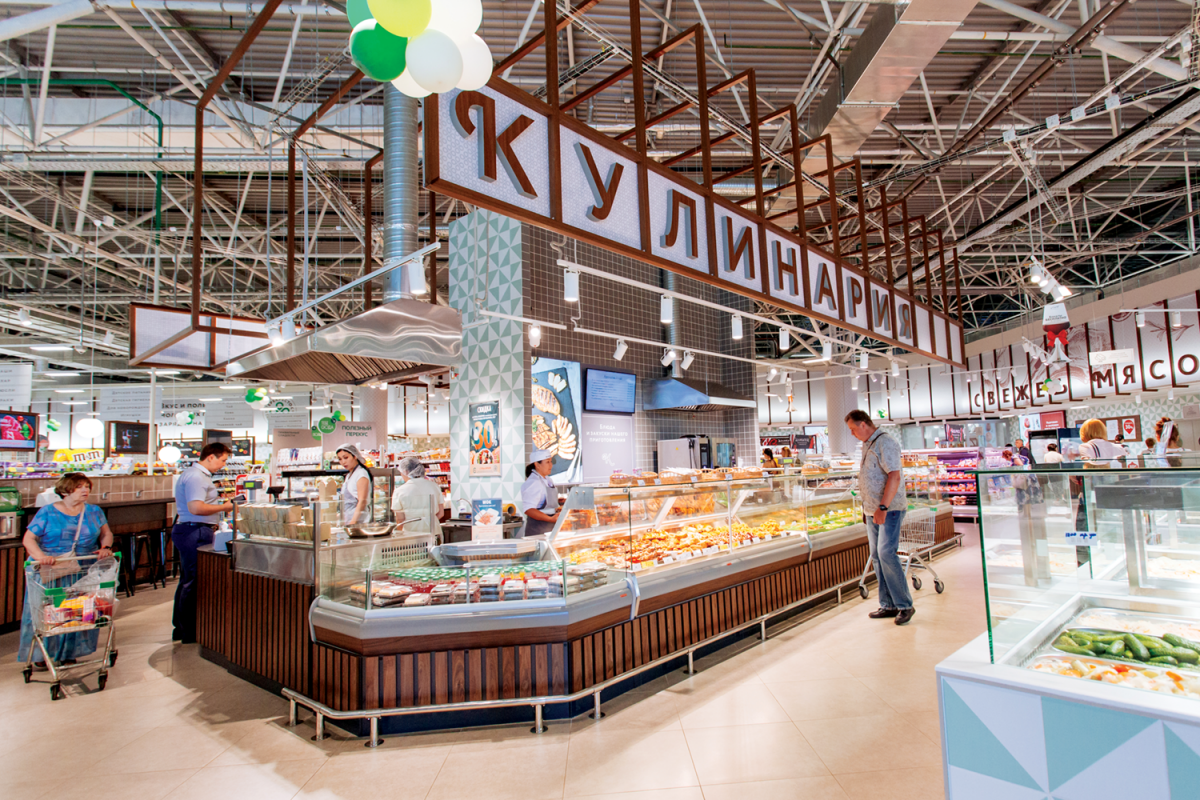
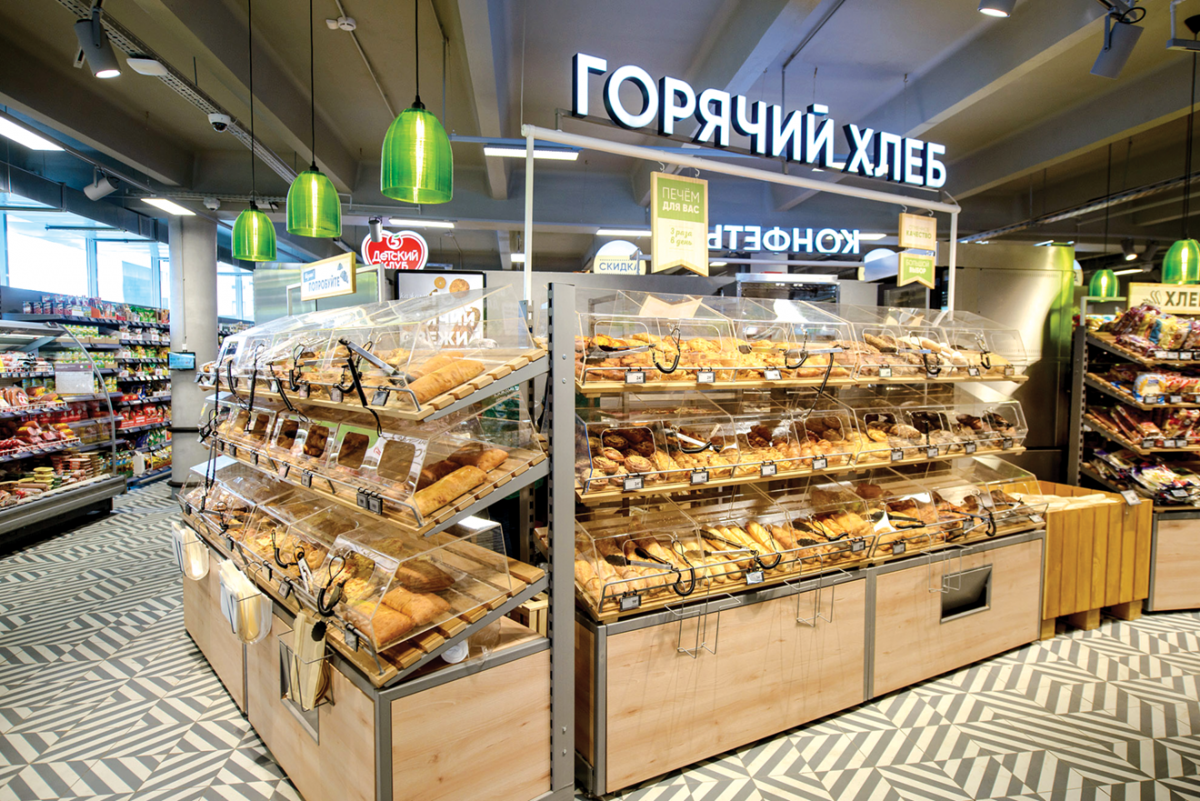
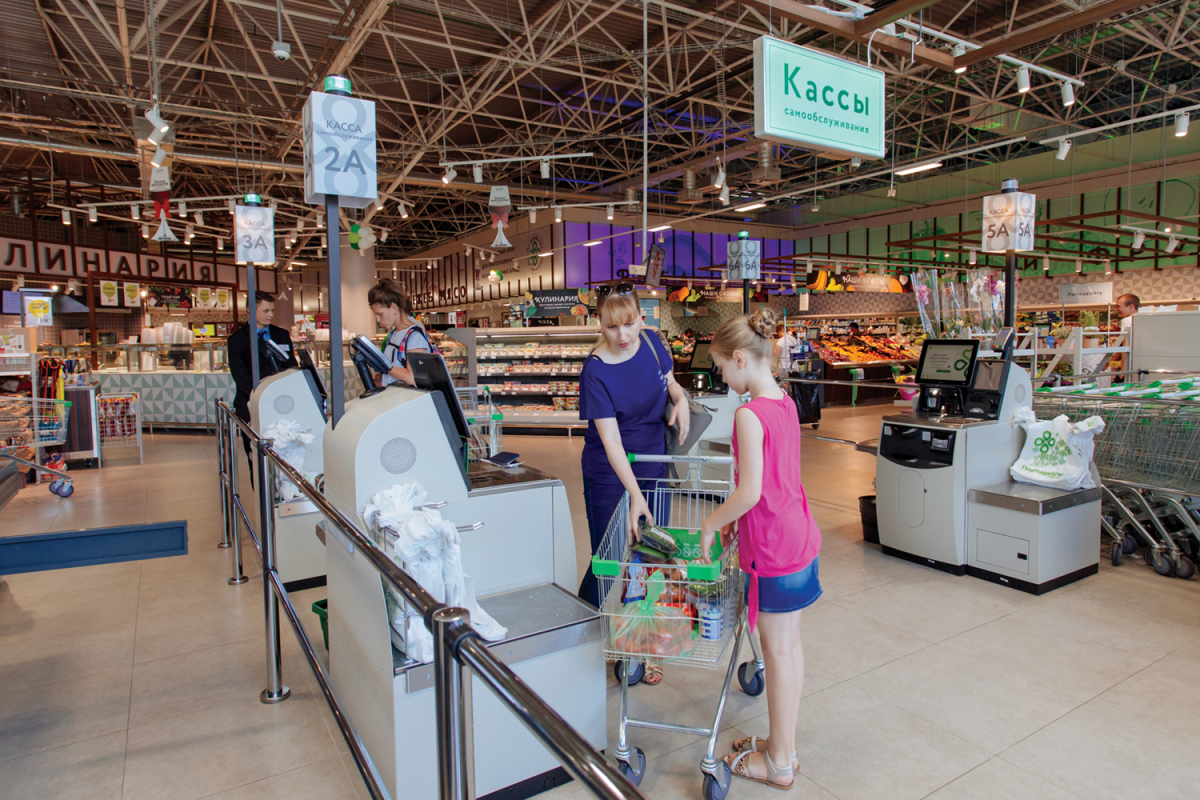 Russian shoppers are visiting grocery stores more often but are buying less. The average store visits per trip is now seven to eight compared with two to three stores previously.
Russian shoppers are visiting grocery stores more often but are buying less. The average store visits per trip is now seven to eight compared with two to three stores previously.
In the medium to longer term, investment in the hypermarket format by Lenta and Auchan will help them compete by targeting new shoppers, especially in fresh, and targeting local shoppers with relevant ranges, Alkhatib said.
Consumers Demand More
Shoppers also expect higher quality products and a better customer experience, as Goncharov at Pyaterochka suggested. However, consumers’ constrained purchasing power is limiting retailers’ opportunities to pass on price increases or to try to encourage them to spend more on products with added benefits.
“As a result, retailers will focus on improving and marketing the quality-to-price ratio to highlight the value they offer shoppers, which will be key to help them win attention and attract sales as people will be increasingly frugal in their spending,” Alkhatib said. “This will see retailers invest in their private label ranges to create greater distinction between brands and tiers and to enable them to enter new categories, which have traditionally been dominated by brands.”
Despite this trend, there is growing interest in healthier products and those that help shoppers save time by providing further convenient solutions. “We are seeing stores being redesigned, such as X5’s new concept Pyaterochka, which has increased its range of fresh and has made food-to-go and ready meals a core part of its offer,” said Alkhatib.
Global trends for fresh food on the move are firmly on the Pyaterochka radar. “People want to spend less time cooking and focus more on fresh food to eat and ready to go,” Goncharov said.
The proximity format is big in Russia, and we see quite a bit of market potential for growth.
So-called channel blurring is very real and apparent in today’s marketplace. “We need to be in the restaurant business,” Goncharov acknowledged. “We sell ingredients, but the customer wants the experience of consuming food, so it’s our job to think about how to give that final product to them. Borders are disappearing, and we don’t know what will happen in five to 10 years, but we are competing in the restaurant/food industry.”
In preparation, X5 Retail Group has set up a Smart Kitchen facility in Moscow, which supplies 200 SKUs of freshly made products including lunches, sandwiches and crepes to stores and also fulfills express delivery orders—fulfilling online orders from its Pyaterochka store network within 30 minutes of order placement, a service currently on trial in two stores southwest of Moscow.
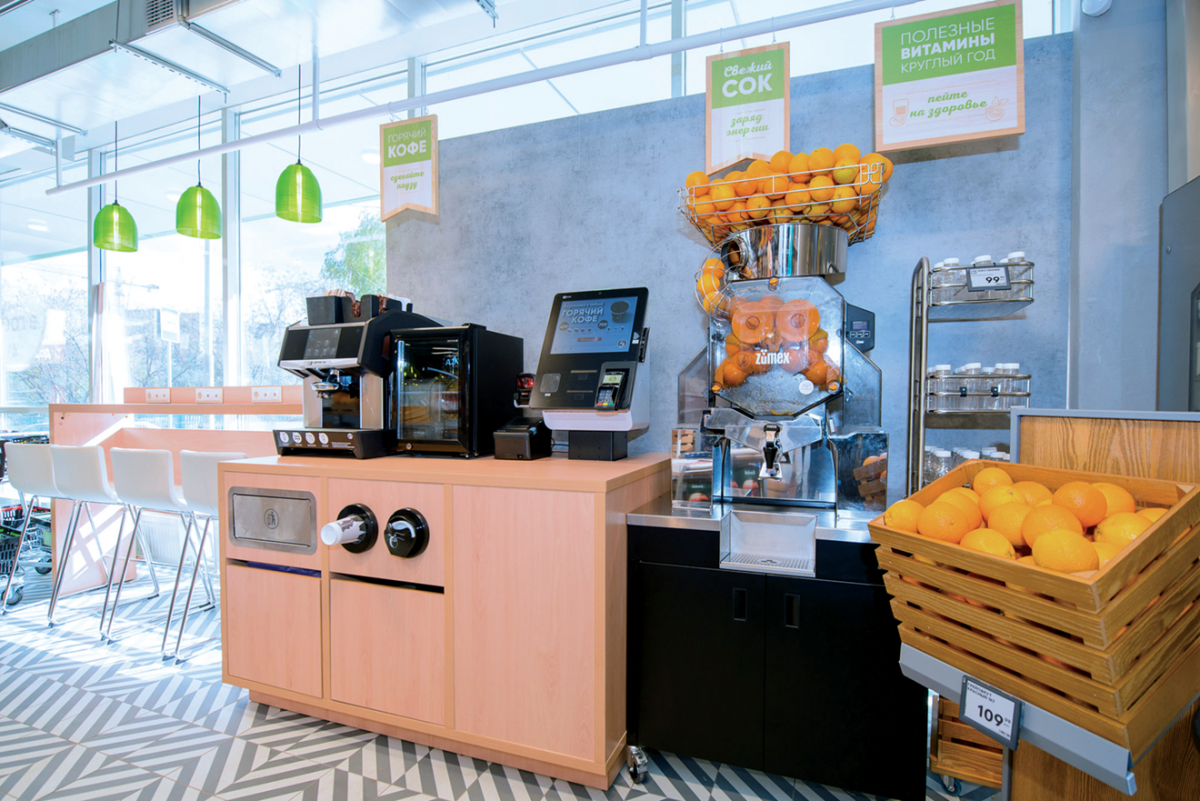 In Russia, there is growing interest in healthier products and those that help shoppers save time by providing further convenient solutions.
In Russia, there is growing interest in healthier products and those that help shoppers save time by providing further convenient solutions.
Alkhatib reported that similar steps are being taken by Auchan as it looks to drive improvements in its operations. With its new Audastore design concept, the retailer is looking to improve shoppers’ in-store experience, encourage them to visit more and to stay in-store for longer by offering an experiential retail foodservice, mainly through an increased investment in its fresh and food-to-go offer.
Innovations Ahead
Russia provides plenty of inspiration for international retailers from an operational and innovation perspective, too. “The challenging market environment, which will limit sales growth and affect profits, is requiring Russian retailers to invest heavily in solutions that help them to reduce costs along their whole supply chain,” said Alkhatib.
The challenging market environment is requiring Russian retailers to invest heavily in solutions that help them reduce costs along their supply chain.
From a logistics point of view, Magnit and X5 are opting for consolidated delivery services, which allow transport companies to consolidate goods from different suppliers and deliver the orders to regional distribution centers. Elsewhere, Magnit is rolling out a “piggyback” (combined) delivery service as part of a partnership with a Russia rail subsidiary.
In-store X5, with its lab store in Moscow, is testing several innovations at a Pyaterochka discount store as it aims to uncover opportunities to lower costs and improve efficiency, while maintaining a welcoming shopper environment and experience.
“As the retailer trials several different solutions simultaneously to try to discover which works best for it and its shoppers, the results of these tests could provide interesting learnings for retailers globally,” said Alkhatib. “From shelf-monitoring cameras, which notify staff when on-shelf stock levels are low, to its use of smart shelves, which aim to meet the same need in a different way, X5’s lab store could help inform retailers’ efficiency-focused development.”
As to the future for grocery retail in Russia, there’s plenty of untapped potential, despite the country’s vast geography. “The large geographical size of Russia [10 time zones] will not limit the opportunities for online, with China underlining the opportunities the channel can provide in large-scale countries,” said Alkhatib. “Instead, its size could provide new chances for retailers to sell their core, ambient ranges online across the country [with a population of 146 million],” he said.
“As these systems develop, it will be interesting to see how Russian retailers progress and evolve their wider ecosystems, to incorporate more of shoppers’ wider spending, through the addition of services. This will provide the leading retailers with access to more data on shoppers, which should help them personalize their offer even more to individual shopper’s needs,” Alkhatib said.